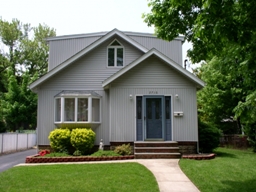Case-Shiller: Home Price Growth Slower in April

According to the Case-Shiller 20-City Home Price Index for April, home prices slowed from the March reading of 4.30 percent year-over-year to 4.20 percent year-over-year. David M Blitzer, Chairman of S&P Index Committee, said that home prices are not accelerating and characterized slower home price growth as “sustainable as compared to double-digit appreciation in home prices seen in 2013.”
The disparity between wage increases and home price growth was keeping would-be-buyers on the sidelines; so slower gains in home prices may bring more buyers into the market.
Denver Claims Top Spot for Year-Over-Year Home Price Growth
Denver, Colorado led home price appreciation in April according to Case-Shiller. The mile-high city posted a reading of10.30 percent year-over-year home price growth in April. San Francisco, California followed closely with a reading of 10.00 percent. Miami, Florida rounded out the top three price gains with a reading of 8.80 percent.
The lowest reading for year-over-year home price growth in April was posted by Washington D.C. with a reading of 1.10 percent. This was followed by Cleveland, Ohio with a reading of 1.30 percent and Boston, Massachusetts with a reading of 1.80 percent year-over-year home price growth.
Of the nine cities reporting higher year-over-year price gains, Las Vegas Nevada reported a gain of 6.30 percent in April as compared to a gain of 5.70 percent in March. Las Vegas was one of the hardest-hit housing markets during the recession.
Seattle Tops Month-to-Month Home Price Growth
Month-to-month price gains in April were led by Seattle Washington, which reported a home price gain of 2.30 percent. This reading was followed by San Francisco, California where home prices increased by 2.00 percent from March to April.
Denver rounded out the top three month-to-month price gains with a reading of 1.90 percent. Boston, Massachusetts reported the lowest month-to-month price growth with a reading of 0.30 percent followed by New York City’s reading of 0.50 percent and San Diego, California’s month-to-month gain of 0.60 percent.
In unrelated reports, the Commerce Department reported that pending home sales rose to their highest reading in more than nine years. Pending home sales rose by 10.40 percent year-over-year in May. Pending home sales are seen as a reliable indicator of future closings.

 Last week’s economic reports included the Case-Shiller Home Price Indexes, FHFA’s House Price Index and Pending Home Sales from the Commerce Department. The details:
Last week’s economic reports included the Case-Shiller Home Price Indexes, FHFA’s House Price Index and Pending Home Sales from the Commerce Department. The details: